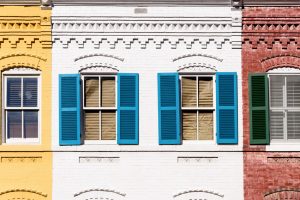
Photo courtesy iStock/YayaErnst
A new study has found coating exterior walls with solar-reflective paints can lead to substantial energy savings in hot climates and also curb pollution.
A study by the U.S. Department of Energy’s (DOE’s) Lawrence Berkeley National Laboratory (Berkeley Lab) modeled several different types and ages of homes, retail stores, and office buildings in cities across the United States and found sunlight-reflecting ‘cool’ exterior walls can save as much or more energy than sunlight-reflecting cool roofs.
Cool walls are generally considered to have a higher-than-average solar reflectance, meaning they reflect a higher fraction of incoming sunlight than average exterior walls, and high thermal-emittance (i.e. they can efficiently release absorbed heat). The study featured an analysis of more than 100,000 building simulations.
While there is no formal, universal definition for cool walls at this time, Ronnen Levinson, a Berkeley Lab staff scientist and co-author of the study suggests low-performance cool walls should reflect at least 40 percent of solar energy, while high-performance cool walls should reflect at least 60 percent. The study assumed an average wall that is not cool reflects 25 percent of sunlight.
Light-colored walls are coolest, but pigments reflecting the invisible half of sunlight and ones that fluoresce can be used to make cool paints in a wide range of colors. Shiny, bare-metal walls tend to not be cool because they are slow to release absorbed heat.
In warmer cities like Miami (Florida) and Albuquerque (New Mexico), researchers found cool walls could lead to annual HVAC energy cost savings of up to 11 percent for stand-alone retail stores, 8.3 percent for single-family homes, and 4.6 percent for medium-sized office buildings. For single-family homes across all California climates, the study found potential energy cost savings of four to 27 percent.
The study accounted for both energy savings in the cooling season and elevated energy costs in the heating season.
The researchers also found cool walls offer comparable reductions in annual emissions of air pollutants such as nitrogen oxides (NOx) and sulfur dioxide (SO2), and greenhouse gases (GHGs) such as carbon dioxide (CO2). They also lower peak demand for electric power.




